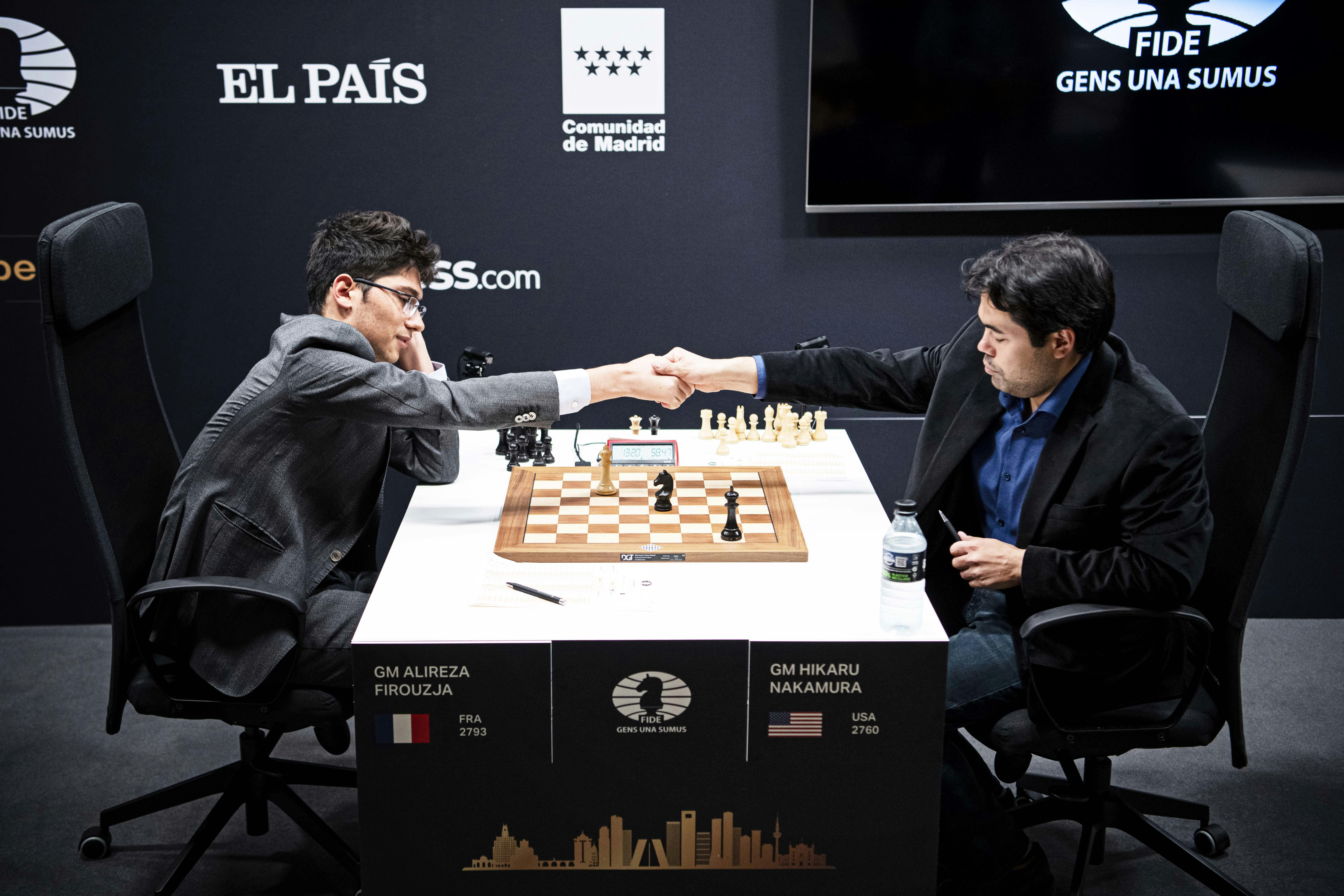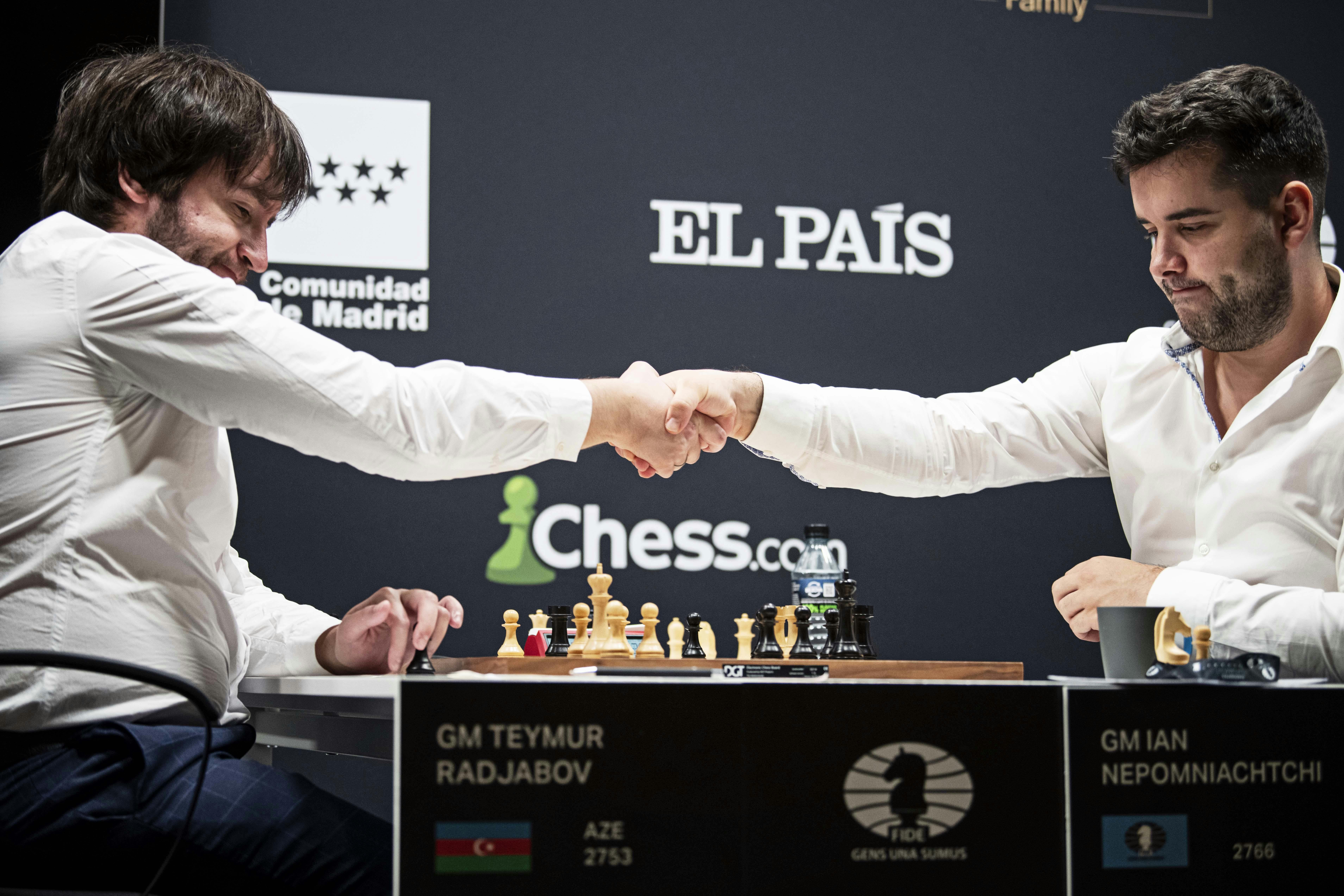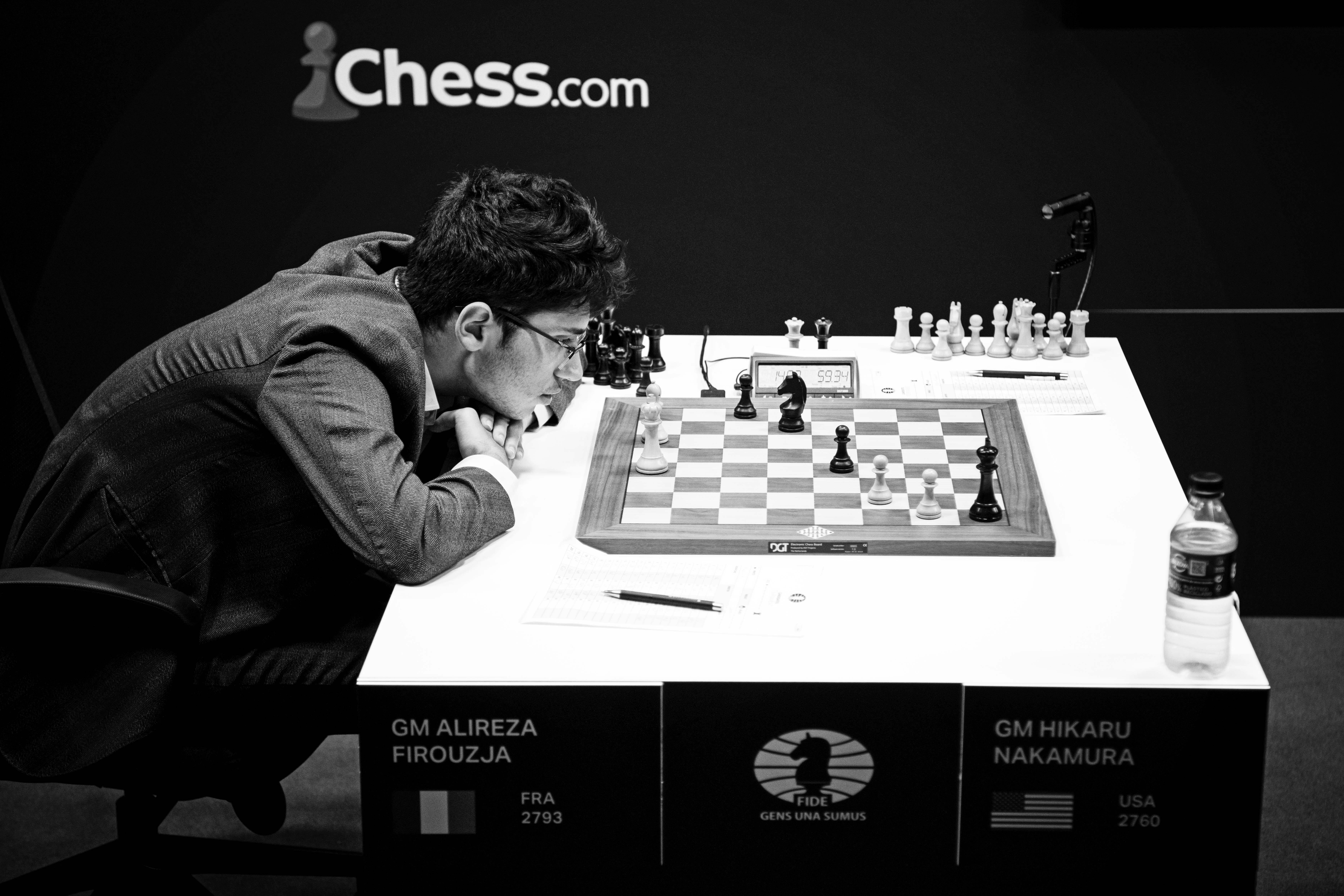Candidates Day Three: No Luck on The Draw

Credits: FIDE/Stev Bonhage
The third day of the Candidates Tournament in Madrid has concluded with four draws - but don’t be fooled, it wasn't a day with absolutely no action!
Daily, Lichess is providing a broadcast of the games played in real-time. We also have a selection of annotated games by GM Nijat Abasov and video recaps by WGM-elect Jesse February.
Game One: Ding v Rapport: ½ - ½
Can a top-10 player find themselves in a seemingly much worse position with black consecutive times and manage to hold the draw? Well, for an “escape artist” like Rapport, the answer is yes!! With the two players playing the mainline of Grünfeld Defense (exchange variation) until move 10, Rapport decided to go for the less common line of 10… b6 followed by 11… Bb7. A few moves later, and after Ding played h4, Rapport played Rfd8 and after 18. Bg5, he immediately sacrificed the exchange with 18…Nxd4 (note that due to black’s pieces placement and white’s d5 ideas, the only alternative would have been f6 - but f6 was definitely not part of his plans). A critical moment struck only a couple of moves later, when, with his position looking not so pleasant, Rapport played 22… Nxe2; this move allows Qxd8 and after Qxe4 Bxe2 Qxg2+ Ke1 white would end up with two rooks for a bishop and 3 pawns but quite an open king. While it would have been possible to get out of the checks, consolidate the position and convert the advantage, Ding, having only 17 minutes for 18 more moves and no increment, played Qxe2 almost immediately. With the light squared bishops and the h pawns exchanged, some piece maneuvering and e5 played, Rapport got an equal position. Ding, with less than a minute on the clock and nothing to hope for, gave back the exchange for the a-pawn and the game ended in a draw by repetition.
https://lichess.org/study/450dtcgH/E3CYbizK

Credits: FIDE/Stev Bonhage
Game Two: Caruana v Duda: ½ - ½
Channeling Maxime Vachier-Lagrave, the elite French grandmaster widely considered as one of the greatest living authorities on the Sicilian Najdorf, Caruana and Duda went into a line of the Sicilian Najdorf known well at the top level. For 22 moves the players followed the game played between Dominguez and Anand in 2009 almost identically, finally diverging at move 23 (although this was not a new move either, just less tested at the elite level). We only entered proper uncharted territory around move 25, but there was little life in the position for either player. After each player traded off their final rooks on the board, a draw seemed the only likely outcome. Indeed, at move 51 only black’s knight was left on the board, and the game ended in a draw due to insufficient material.
https://lichess.org/study/embed/oe2udItH/G9cAO9ZM

Credits: FIDE/Stev Bonhage
Game Three: Radjabov v Nepomniachtchi: ½ - ½
Previous Candidate’s winner, Ian Nepomniachtchi and FIDE wildcard, Teimour Radjabov, treated us with one of the most peaceful and fast games of the tournament so far. With the Catalan on the board, the two players exchanged queens no later than move 7, and all minor pieces by move 20, getting into an equal two rooks endgame with almost symmetrical pawn structure. Nepomniachtchi attacked the a-pawn placing his rook on a3 while Radjabov prepared to, and later executed the plan of doubling up rooks on 7th file. However there was no real way of making progress for either side; white puts pressure on - but will never be able to actually capture - the f7 pawn; black’s king is stuck defending the f7 pawn (as long as rooks are doubled on the 7th rank) but similarly white’s king can’t go far either - the a-pawn is falling at any time and white will have to go back protecting his own pawn on f2. Capturing the a-pawn wouldn’t get black far either though; if for example at this position 27… Rxa2 was played, 28. Ra7 Rb8 29. Raxa7 would be a pretty straightforward draw (amongst others). The players, realizing there’s pretty much nothing to push for, went for a much faster draw by repetition.
https://lichess.org/study/embed/oe2udItH/RL6Acd38

Credits: FIDE/Stev Bonhage
Game Four: Firouzja v Nakamura: ½ - ½
Game four of this round was a matchup a portion of the chess fans was waiting for; one of the most promising talents of the younger generation (yet far from newcomer to top level chess) - and by some considered a future world champion, Alireza Firouzja, facing the popular chess streamer and elite chess veteran,, Hikaru Nakamura. Despite playing many online games in faster time controls, this was the first FIDE-rated classical length game between the two players. The two players got into the classical variation of Nimzo-Indian Defense; The old mainline in this position is 6…b6 7. Bg5 Bb7; instead Nakamura went for d5. A couple of moves later b6 was played; however the idea was different; in this position black has the option to develop his light squared bishop on a6 - which happened in the game. This meant that white eventually had to exchange the light squared bishops and give up castling rights - preparing a fianchetto would just be too slow and probably get white into trouble in the meanwhile. With 15…g5 played, Firoujza took with the knight on g5 (unlike his first game, the “sacrificed” material can be taken back at any time), and after a sequence of moves, he managed to get a better position in the endgame. At the key moment at move 41, Nakamura only had one move available to hold the draw 41… c3 which he played immediately. The move caused Firouzja to think for 62 minutes on his reply - possibly a record in the modern era of chess. Even after the rook exchange (which was probably not his best option) and the resulting position, Nakamura still has to be very cautious of his opponent’s ideas! For example, after 46. Ke1, any move other than b4! would be losing, giving enough time to white to take advantage of the extremely dangerous a1-h8 diagonal. However, he managed to deal with Firoujza’s threats and the game ended in a draw.
https://lichess.org/study/450dtcgH/oHLnD7NA

Credits: FIDE/Stev Bonhage